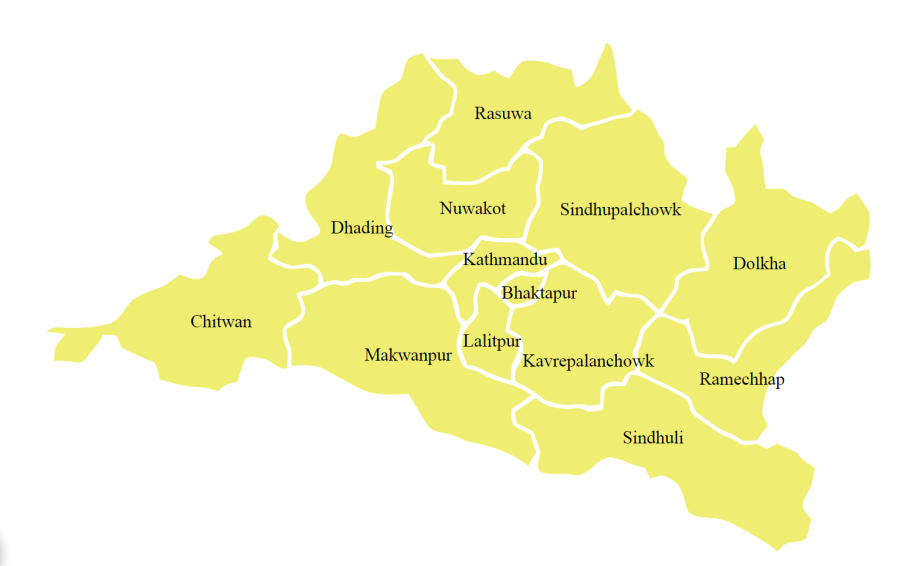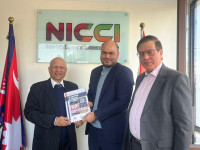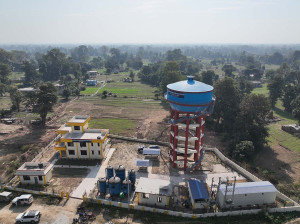Sat, Dec 13, 2025
Money
Province 3 seeks to reduce poverty rate to 7 percent
Province 3 government officials are aiming to reduce poverty rate within its territory to seven percent from the current 15.3 percent in the next five years.
bookmark
Prithvi Man Shrestha
Published at : December 30, 2018
Updated at : December 31, 2018 07:43
Kathmandu
Province 3 government officials are aiming to reduce poverty rate within its territory to seven percent from the current 15.3 percent in the next five years.
This target is based on the approach paper of the first five-year periodic plan (2019/20-2023/24) that the Policy and Planning Commission of the Province unveiled on Friday.
Considering that the national average poverty rate stands at 21.6 percent, the province which hosts major economic centres including the capital Kathmandu, Chitwan, Hetauda and Kavrepalanchowk, has relatively low levels of poverty.
“We aim to halve the poverty rate through high economic growth and targeted efforts in the backward regions within the province,” said Khim Lal Devkota, vice-chairman of the Policy and Planning Commission of the Province 3.
“As we are aiming for inclusive development, we are studying the pattern of Human Development Index (HDI) in all local units within the province to identify the backward regions and refocus efforts to develop them.”
According the approach paper, the province will collaborate with local governments to redress poverty by mitigating absolute poverty, identifying the poor and those who are at-risk of falling under the poverty line to increase their access to resources and capacitate them to engage with the local level.
It also talks about increasing the participation of the marginalised people in public service and development work that could generate income.
The approach paper, based on which the periodic plan will be prepared, is also aiming to achieve double digit growth of 11 percent compared to an estimated 6.3 percent growth of the provincial economy in the next five years. This, according to the approach paper will help to achieve a two-fold increase to per-capita income by the end of the five-year period.
If everything goes according to plan, the Province will be contributing more than 40 percent to the national economy. Currently, Province 3 contributes around 32 percent.
The approach paper has identified the presence of federal capital and significant concentration of education, health, tourism, trade, industry and financial institutions under the province as major areas of opportunities with significant potentialities to contribute in achieving the above noted growth targets.
“These are the conditions that would help to grow the contribution of the province to the national economy,” said Devkota.
The approach paper has identified five key catalysts for the Province’s development which include: qualitative rural and urban infrastructure; specialised and commercial farming; specialised services and human resource development; small and medium industries and enterprises; and heritage-friendly qualitative tourism. During the five year period, the approach paper says that the provincial government will increase life expectancy to 75 years from 69.7 years as of 2011, provide access to drinking water to 100 percent of the population from 67 percent as of 2011 and literacy rate to 95 percent from 74.85 percent as of 2011.
While Province 3 has aimed high, Devkota acknowledged that generating the resources to achieve the goal would be challenging. According to him, the province government would need to coordinate with the central government for sharing of resources as the current resources allocated to the province at the moment is low. “As the constitution has envisioned fulfilling the resources needs of the provinces through fiscal transfer, the federal government must do so to help provinces to attain their targets,” said Devkota.
Five key catalysts for development
- Qualitative rural and urban infrastructure
- Specialised and commercial farming
- Specialised services and human resource development
- Small and medium industries and enterprises
- Heritage-friendly qualitative tourism
Most Read from Money
Record graft case filed over China-funded Pokhara airport
Nepal set to allow Indian high-value notes after a decade-long ban
Public savings at risk as debt-ridden Nepal Airlines’ finances spiral
Private company starts import and supply of LNG in Nepal
Springs and groundwater shrinking across Nepal, ADB assessment warns
Editor's Picks
Public savings at risk as debt-ridden Nepal Airlines’ finances spiral
Hypertension and diabetes driving eye crisis in Kathmandu Valley
Bureaucratic hurdles, legal failures force father and daughter to take their own lives
Record graft case filed over China-funded Pokhara airport
Drone helps farmers tackle old challenges
E-PAPER | December 13, 2025
×




 16.12°C Kathmandu
16.12°C Kathmandu













